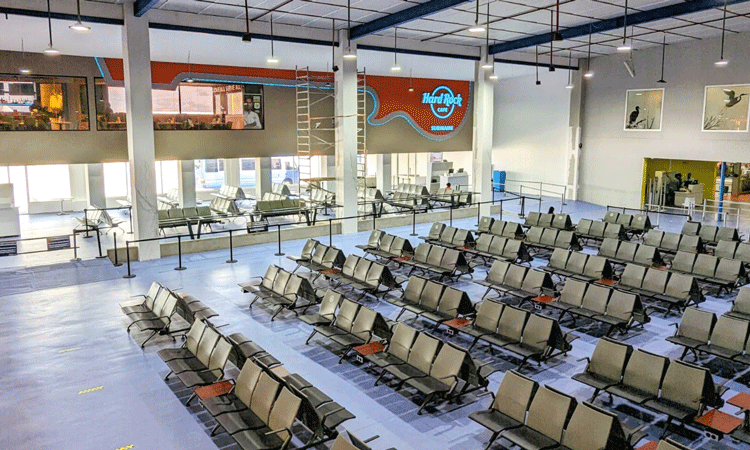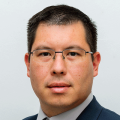Generating traction into J.A. Pengel International Airport
- Like
- Digg
- Del
- Tumblr
- VKontakte
- Buffer
- Love This
- Odnoklassniki
- Meneame
- Blogger
- Amazon
- Yahoo Mail
- Gmail
- AOL
- Newsvine
- HackerNews
- Evernote
- MySpace
- Mail.ru
- Viadeo
- Line
- Comments
- Yummly
- SMS
- Viber
- Telegram
- Subscribe
- Skype
- Facebook Messenger
- Kakao
- LiveJournal
- Yammer
- Edgar
- Fintel
- Mix
- Instapaper
- Copy Link
Posted: 9 August 2024 | Andrew Müller | No comments yet
International Airport Review had the opportunity to speak to Corporate Planner – Business Development for J.A. Pengel International Airport, Andrew Müller. In this Q&A, Andrew tells us about how the airport is attracting new carriers and passenger traffic by marketing Suriname to energy companies, new markets and tourism organisations.


c: PBM Airport
How did your passenger operations progress during 2023? Where are you now in terms of passenger traffic and operations?
J.A. Pengel Airport is located in Suriname, which is also known as the Dutch Guyana. At the moment, when you hear Guyana, you think of oil and gas. So that already is a bit of a trendsetter for exponential growth. We’re not seeing it yet, but we have seen the traits of that coming into the market.
That’s why I’m trying to find new routes and to see how we can bring that passenger journey for everyone that would come into Suriname and for the airport to, of course, boom. That’s what we’re looking for.
Could you tell me about the company’s terminal improvement project for J.A Pengel International Airport and what it will achieve?
Our policy has been to enhance our customer journey, and those going from point A to point B in a seamless situation. The project basically started pre-COVID-19, and then, of course, during the pandemic we had to slow down quite a bit, whereas other airports actually made good use of that time to improve facilities. However, we needed the funding quite badly. So just as the traffic recovered, we started to set the project forward.
As of the third quarter of 2023, improvement has started. If you’re there, you will see that immediately (not yet on the arrival side) on the departures area where the passengers are now going into, there is a more modern facility. And we have more in store. We have technology coming into play versus the traditional all-manual situation, which we are trying to change. Overall, it will change our facilities for the better.
How will these improvements accommodate more passenger experience and capacity?
At our airport, our arrivals are totally separate to our departures. On certain days, when we talk about a busy day, we have three flights and then it’s overcrowded. There was a requirement to expand seating capacity drastically.
Since Suriname is a former colony of the Netherlands, we have quite a lot of Amsterdam traffic. And when you have two wide-body aircraft at one moment, the facilities become over-congested and the passenger journey becomes a nightmare. The plan was set forward to increase seating capacity by having an increase of more than 100%.
We’ve also added some new restaurant facilities to cater for additional seating capacity. We will be done by the end of the year on the departures side.
Unfortunately you lost the carrier American Airlines in 2023. Can you tell us about the situation and how the loss of oil and gas companies have impacted the airport financially?
We lost American Airlines in 2023, and that was predominantly due to the fact that traffic was slowing down and the market became a bit of a losing station – in spite of the fact that oil and gas companies were actively hunting for the jackpot. So, they said, “Andrew, we’re going to pause for a moment, let the market recoup, and we will see how things go further.”
That’s why I’m here at Routes; to talk with them and update them as to the potential of what’s happening now in Suriname compared to last year. We discuss what the different movements are that we have seen happening over a year and post-COVID-19. Thankfully the numbers are growing, so that is a good start. This will hopefully enable American Airlines to return to J.A. Pengel International Airport at some point in the future.
Are you optimistic to get them back? What is your broader game plan?
Yes, we are optimistic. And it doesn’t only stay with American Airlines; it goes further to a lot more airlines that are looking into the market. Airlines are looking at our neighbour, Guyana and what is happening there because we have a bit of a three-to-five-year lag.
We might see what happens in the next three to five years, so it’s kind of a copy-paste situation. I wouldn’t say that Guyana is the guinea pig, but we will follow suit. We see a lot more airlines coming in the near future to Suriname.
How does this reflect, more broadly, on the struggles that smaller airports are facing across the South America region?
It’s still a challenge, overall. Suriname is located quite strategically. However, with some of the routes and airlines that want to operate, that is not necessarily the case because they find challenges with operating times; the flight times they need to do; the crew rest that needs to be incorporated and so on. It does become quite a challenge, especially since we are small and are dependent on more connectivity. But as of yet, we cannot offer that in its totality.
How are you working with government and tourism agencies to enable more traffic?
Our relationship with the government is quite good. However, we do lack a lot of some of the experience to helps grow that market – this is especially true of our tourism industry.
It requires a lot of education and mind shifting as well. But we do have the help from the government in terms of getting bilateral agreements signed with different nations. We strive for liberalisation overall, and for anybody to come and go. But we need to do it together. It’s not a one-man show. We are part of the government, but they need a helping hand, as do we.
To localise, regarding tourism and how you’re working with hotels, what sort of challenges have you been running into in trying to generate tourism and traffic to the area?
In terms of generating the traffic, we’re leaning on the development of the oil and gas. However, if oil and gas stops operating, you lose all that traffic. We need to make our tourism market more sustainable, that will last for many, many years to come. We are a bit of an unknown country, so that is putting us back a little bit. But that’s why we are at Routes to promote Suriname, to promote what opportunities there are. Once we do get that traffic, people will talk about it. They’re already saying the region could be the next Dubai and we’ve already seen what that, in reality, has brought to them. We could be a fraction of that.
What opportunities do you foresee in 2024?
Well, for 2024, one, is to get our total facilities up to where they need to be and up to the international standards. I will keep working to help with the route development so that everybody can eventually find the connectivity point to get to Suriname easily.
Unfortunately, right now we must make too many hops and stops to get to Suriname, so that’s quite difficult. But that’s my focus, to start doing that in 2024 to get them ready, for the years to come. But the work has to start now.
What is your airport’s most distinguishing feature that gives passengers a sense of place?
Suriname is quite unique. We are seen always as the opposite of everything. We’re different, yes. But one thing that draws, something I’ve personally experienced, is when the tourists, or even anyone that we work with comes from abroad, they say Suriname is special. It’s different. That makes us stand out, we’re quite unique. We do not have mass tourism. We don’t have all the big fancy things. We are still a bit old-school, but I think that sets us away quite differently.
For those that eventually come, they’ll see how surprising that will be. I look forward to that changing into something more common and random, aside from being different.


c: PBM Airport
With over 15 years of dedicated service at Airport Management Ltd (AML) – the operator of the Johan Adolf Pengel International Airport (PBM) in Suriname, Andrew Müller, a native of Suriname stands out as a seasoned professional in supporting the management team at AML and leads the business development side of the organization. His career is marked by a blend of operational expertise, strategic vision, and a personal touch that enriches his professional journey significantly by contributing to the aviation industry in Suriname.
Andrew began his career at Airport Management Ltd. in 2009 as a Senior Project Officer. This role allowed him to oversee critical projects and initiatives, setting the stage for his future contributions. After two years, he transitioned to Head of Airport Operations, where he led the Operations Department for over six years, ensuring smooth and efficient airport operations.
In 2016, Andrew moved into the role of Corporate Planner Business Development, excelling in this capacity till today for more than seven years. His involvement in Routes Development was particularly impactful, including his success in securing new air services for PBM. Notably, his efforts led to the introduction of a new Airline and new route by Copa Airlines and the introduction of American Airlines to Suriname, enhancing regional connectivity and driving growth in air travel.
Andrew’s professional achievements are underpinned by a solid educational foundation. He earned a Bachelor of Science degree in Aviation Business Administration from Embry-Riddle Aeronautical University in Daytona Beach, FL, USA, in 2004, which has been instrumental in shaping his career.
On a personal note, Andrew has been married to his wife, Sofia, a native of Colombia, for over 13 years. Together, they share two sons. This Latin influence in his life has been a source of inspiration and has significantly contributed to his success in driving Latin American influence to routes development. Andrew’s multicultural perspective has enriched his approach to business development for AML while bringing a valuable global dimension to his work.
In addition to his professional and personal commitments, Andrew has enjoyed aviation photography as a hobby for over twenty-five years. This passion allows him to merge his love for aviation with his career, capturing the dynamic world of airports and adding a personal touch to his professional life.
Andrew Müller’s career is a testament to his dedication, expertise, and the harmonious blend of his professional achievements and personal passions.
Related topics
Airport development, Passenger experience and seamless travel, Route development, Tourism


















